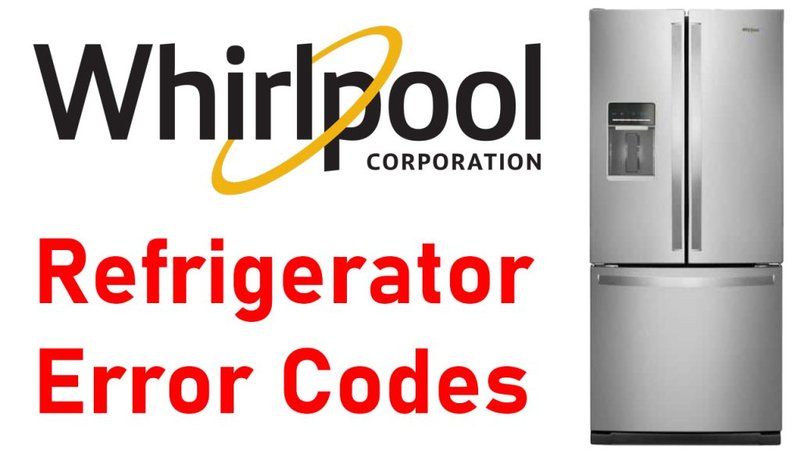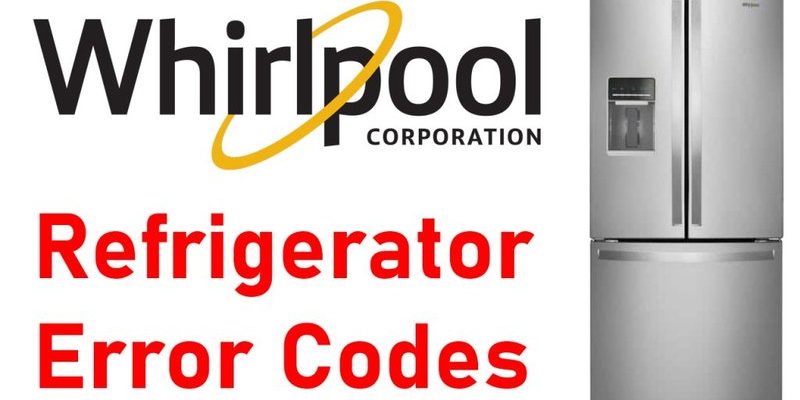
Now, seeing an error code like E1 might feel a bit intimidating, especially if you’re not a tech guru. But don’t worry! This is a common occurrence with appliances as they age or if they’ve had a busy week cooling down a pool party’s worth of food. Think of it as your refrigerator’s way of waving a little flag to say, “Hey, can you check up on me?” Once you understand what the error code means, you’ll know exactly what to do next.
Understanding the E1 Error Code
So, what exactly does this E1 error code mean? In the simplest terms, error code E1 on a Whirlpool refrigerator usually signals a communication problem between components like the temperature sensors or the control board. You can imagine it like two friends trying to talk to each other over a bad phone connection — they can’t quite hear each other properly, so they need some help to clear things up.
To put it in more technical terms, the E1 error is often connected to the refrigerator’s thermistor, which is a fancy name for the temperature sensor. This little device is a crucial part of your fridge’s cooling system because it tells the control board how cold it is inside, allowing the fridge to adjust accordingly. If it’s not working right, your fridge might not know whether to cool down more or ease up a bit, leading to all sorts of temperature issues — kind of like trying to bake a cake without a working oven thermostat.
When this happens, the error code is essentially a request for help to get things back on track. It’s a friendly nudge to take a closer look, similar to when your smartphone suggests you update an app for better performance.
Common Causes of Error Code E1
You might be wondering, “Okay, but why does this error happen in the first place?” Well, there are a few reasons why you could be seeing this E1 error code. One common culprit is a faulty thermistor. Just like how a flashlight won’t work well with old batteries, a worn-out thermistor can’t do its job of reporting the correct temperatures. Over time, these small components can wear out or become damaged, causing them to give inaccurate readings.
Another potential cause could be issues with the wiring or connections between the thermistor and the control board. Imagine trying to use a tangled pair of earphones; it just leads to confusion and frustration. Similarly, if there’s a bad connection or damaged wiring, the signals can’t get through properly, and your fridge’s control board can’t make the right decisions.
Lastly, the problem could stem from the control board itself, which is like the brain of your fridge. If it malfunctions, it may not process the temperature information correctly, leading to the E1 code. In any of these cases, it might be a good idea to check for any visible signs of damage or loose connections to pinpoint the issue.
Steps to Resolve the E1 Error Code
Here’s the deal: fixing the E1 error code can often be a straightforward process. First, give your fridge a quick once-over. Check for any obvious signs of trouble like frayed wires or loose connections around the thermistor or control board. If you’re comfortable doing so, you can unplug the fridge and slightly move the thermistor connection to ensure it’s secure, just like making sure a charger is fully plugged into your phone.
If the error persists after reconnecting, it might be a sign that the thermistor needs replacement. In such cases, it might be best to call in a professional appliance technician. They have the tools and expertise to safely replace faulty parts and check for any additional underlying issues you might not notice.
Consider that sometimes the issue may simply be a temporary glitch. Try resetting the refrigerator by unplugging it for a few minutes and then plugging it back in. This is similar to rebooting your computer to fix a software hiccup, and it might clear the error if it’s not related to a more serious hardware problem.
Preventing Future Errors
To keep your fridge running smoothly and prevent future E1 error codes, regular maintenance checks are key. Just like how you wouldn’t skip oil changes for your car, your fridge benefits from occasional check-ups. Clean the coils and ensure that none of the air vents inside the fridge are blocked by items, which can help the cooling system work efficiently and reduce the strain on components like the thermistor.
It’s also worth noting that keeping the refrigerator door closed as much as possible helps maintain a steady temperature, reducing the workload on the thermistor. Imagine trying to fill a bathtub while the plug is pulled; it just makes things more difficult and less efficient.
Finally, when in doubt, consulting the user manual or calling Whirlpool support can provide additional guidance tailored to your fridge model. Preventive care goes a long way in extending the life of your appliance, keeping your groceries happy and cool. With a bit of attention and quick intervention at the first sign of an error code, your Whirlpool refrigerator will stay a trusted kitchen companion.
